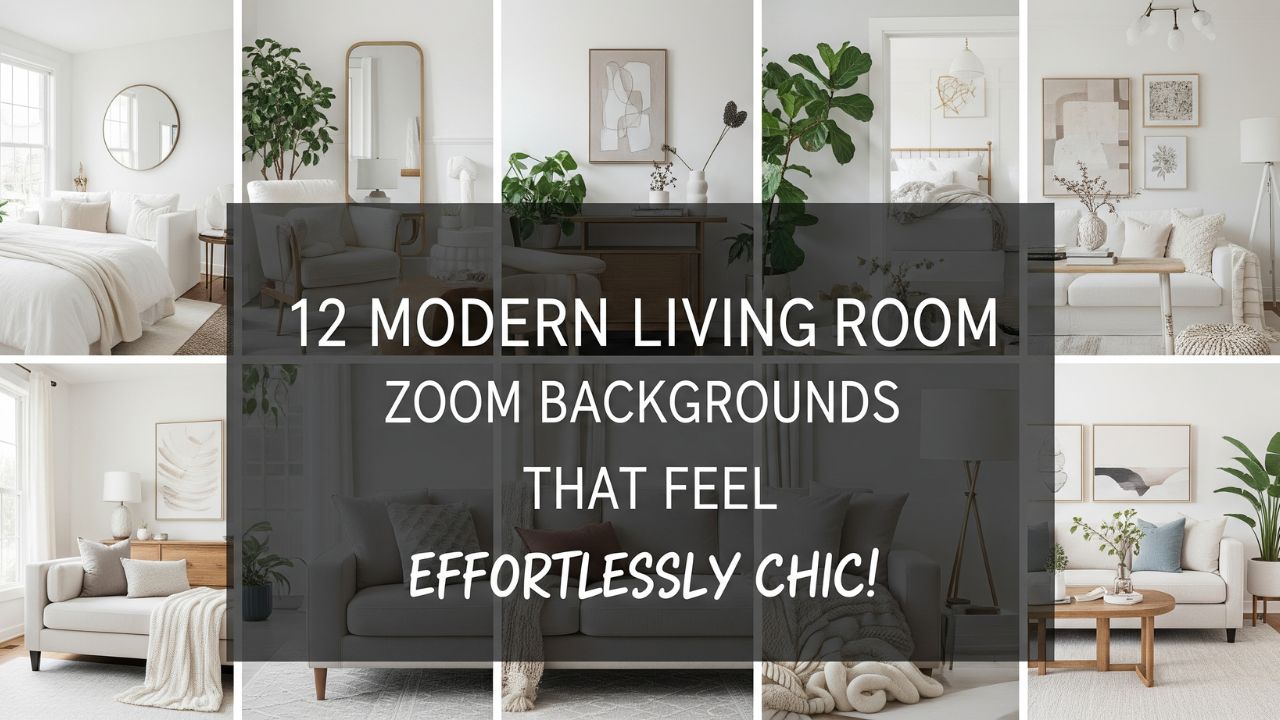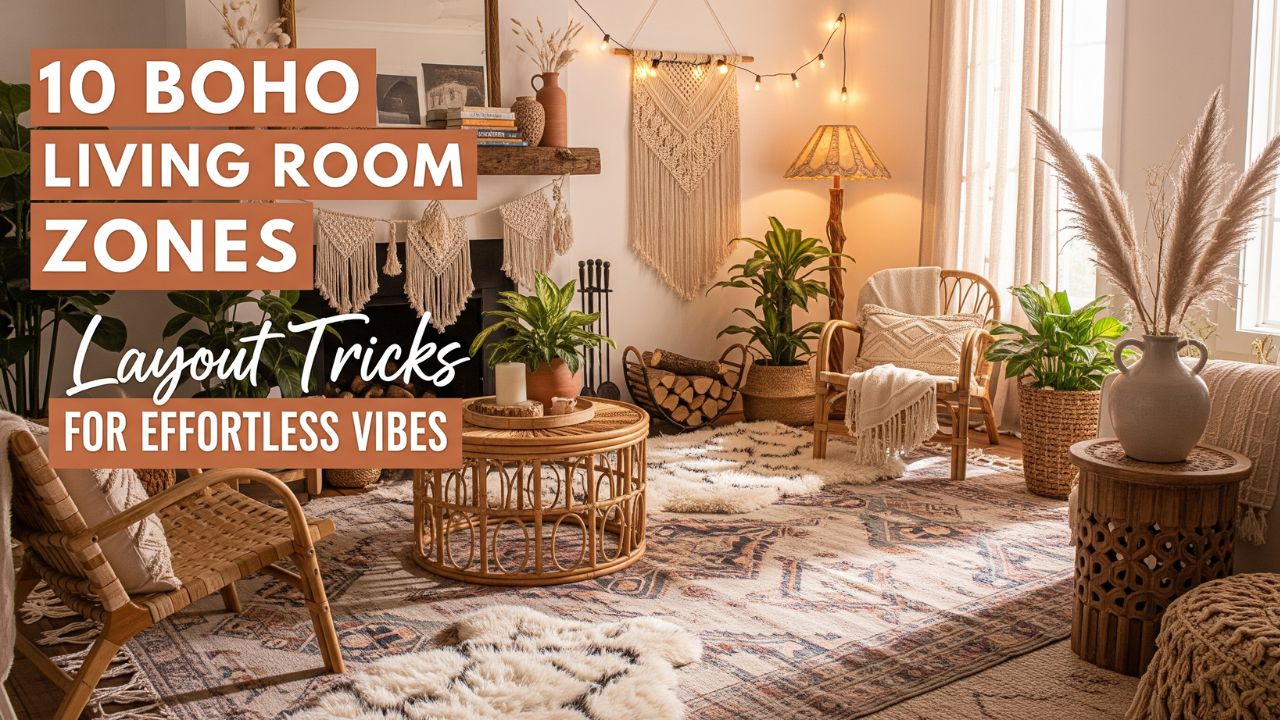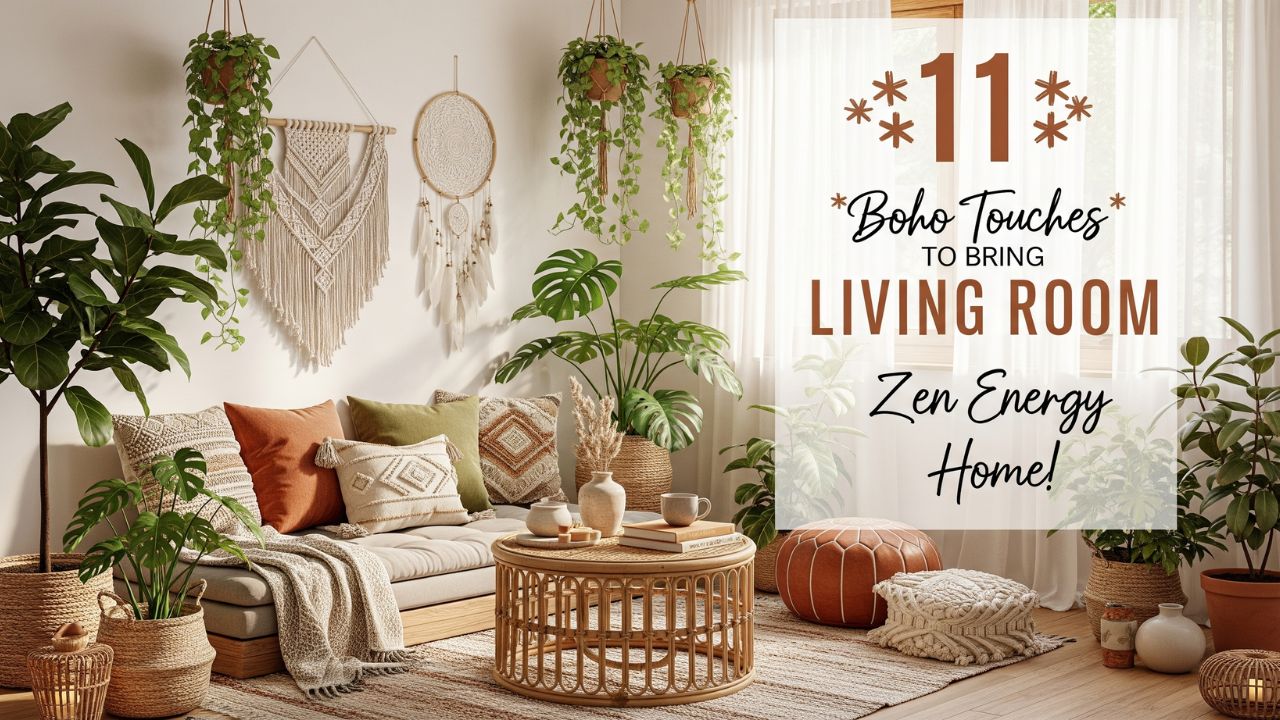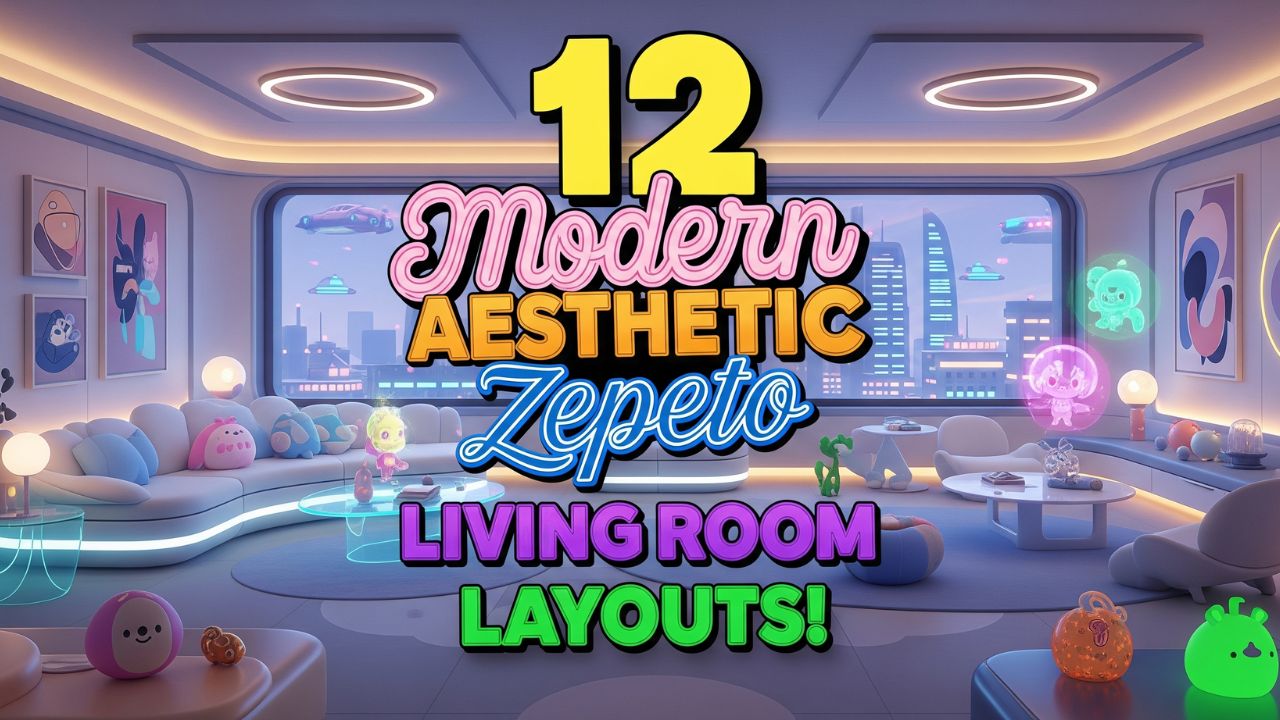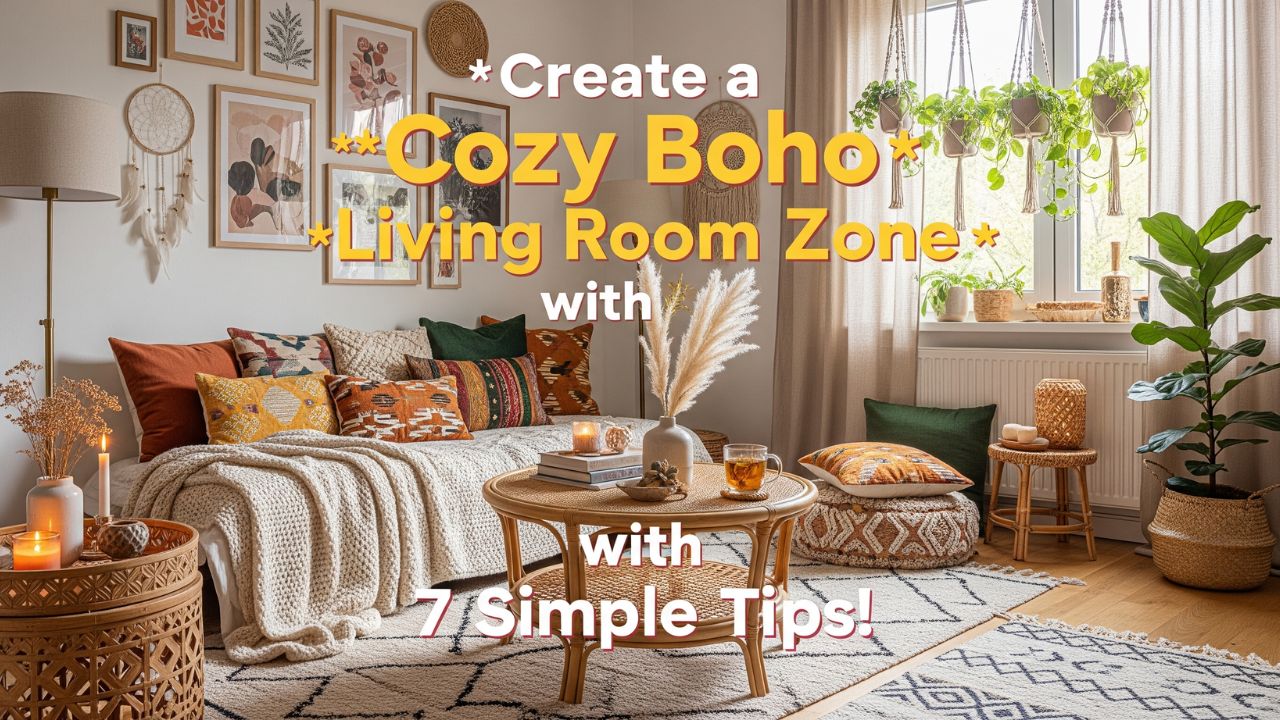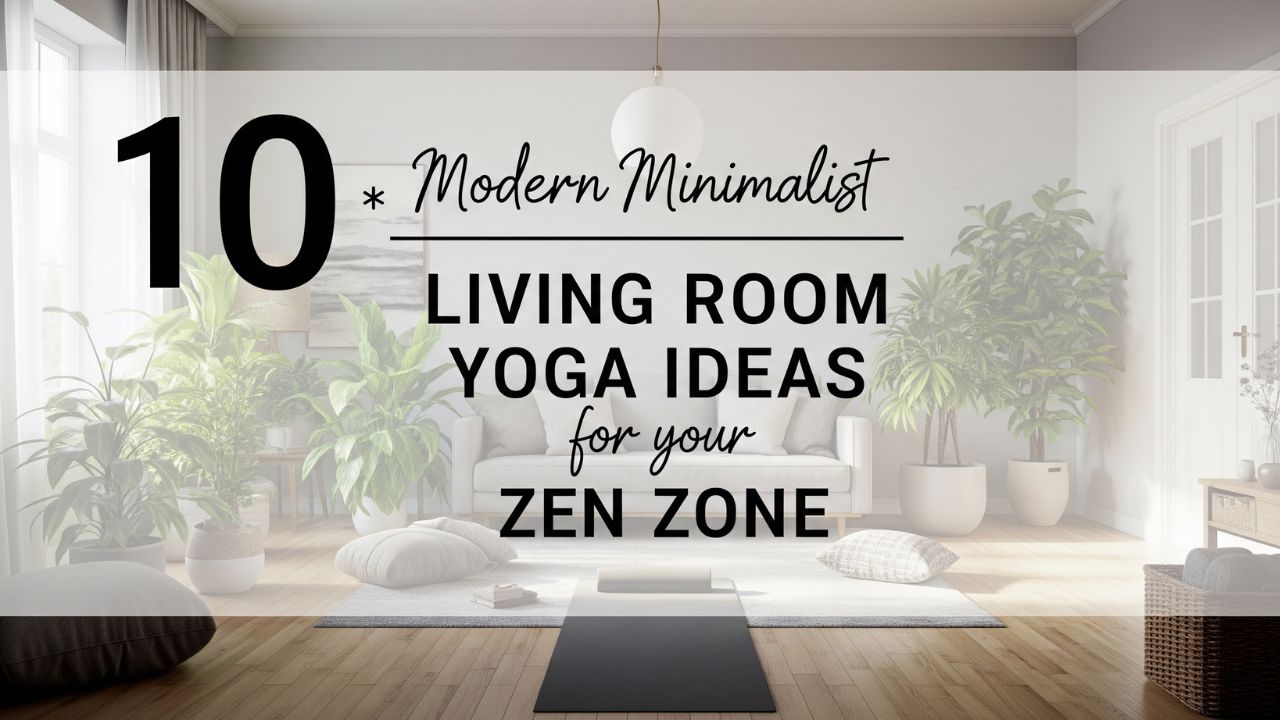Have you ever wondered how to turn your living room into a creative playground for your kids? The living room isn’t just a place to relax; it’s the heart of the home where families gather, and for children, it can become an inspiring space filled with opportunities for imagination.
Kids are naturally curious and creative, but sometimes they need a little nudge to unleash their potential. The best part? You don’t need a huge playroom to foster their creativity.
With the right setup, your living room can be transformed into an engaging and functional activity area that encourages creativity, learning, and fun.
In this post, we’ll explore 15 unique and simple ways you can create a kids’ activity area in your living room that will inspire young minds to think outside the box. From art stations to interactive reading nooks, there’s something here for every family. So, let’s dive in!
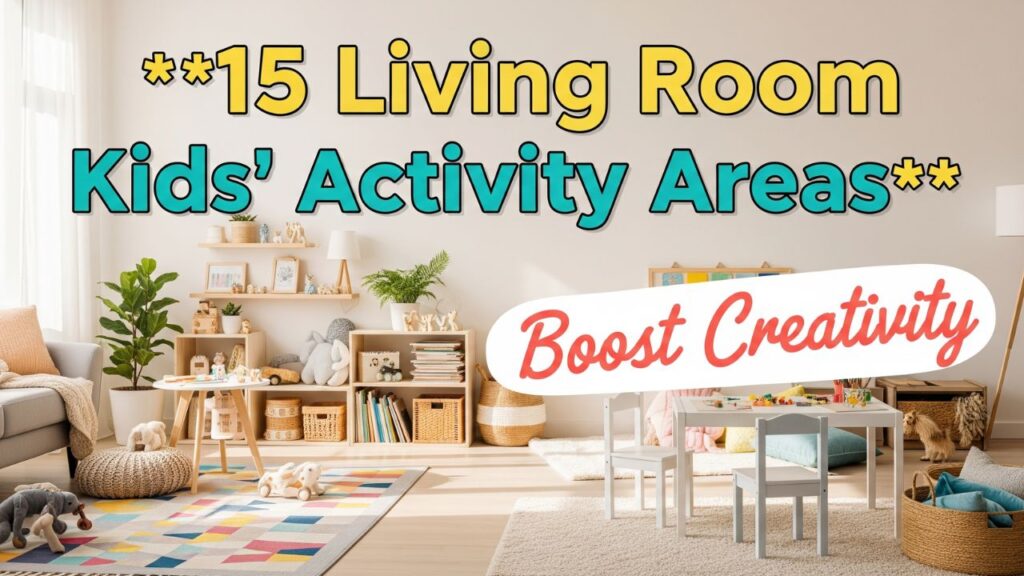
Table of Contents
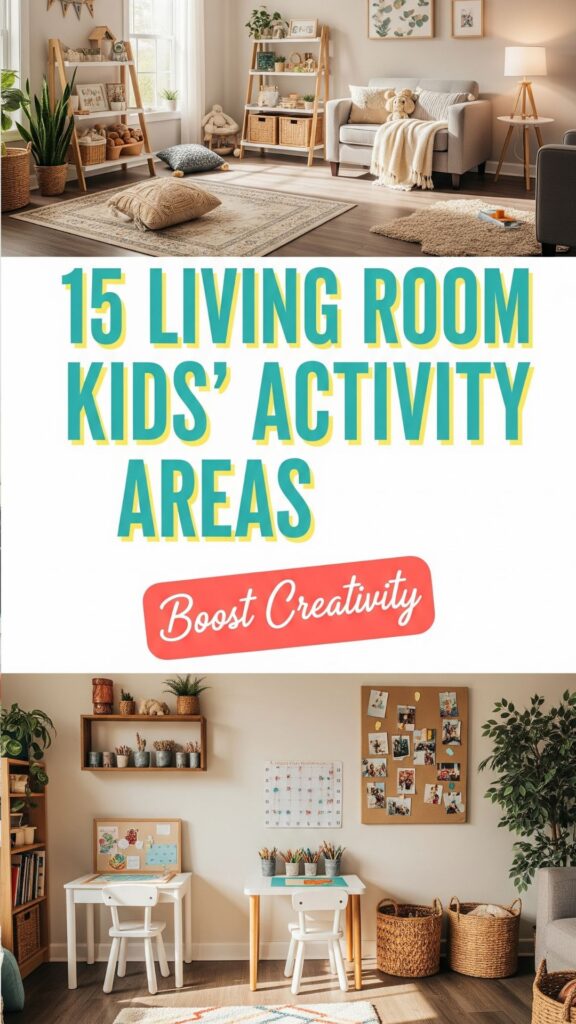
15 Best Living Room Kids’ Activity Areas
1. Art Station: A Canvas for Creativity
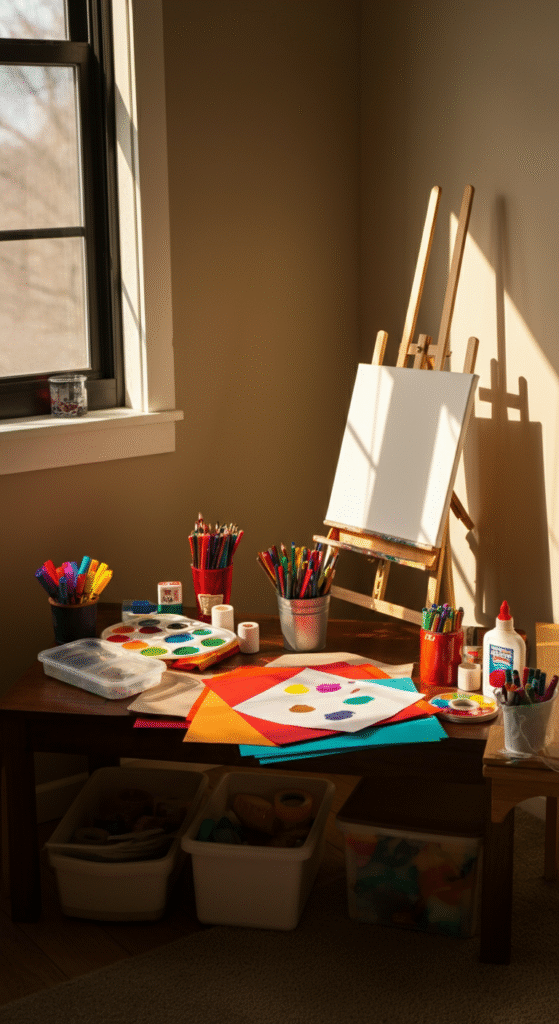
A dedicated art station is the perfect way to encourage your kids to express their creativity. Set up a small table with a variety of art supplies like crayons, markers, colored pencils, glue, and paper. You can also include an easel or a large roll of butcher paper to create an open canvas for painting and drawing.
Did you know? Studies show that regular art activities help children develop fine motor skills, improve their focus, and enhance their problem-solving abilities.
A corner of your living room with vibrant storage for art materials and an easy-to-clean surface can make the art station a go-to creative space. Keep it stocked with fresh materials to keep their interest piqued.
2. Building Block Zone: Constructive Play for Problem Solvers
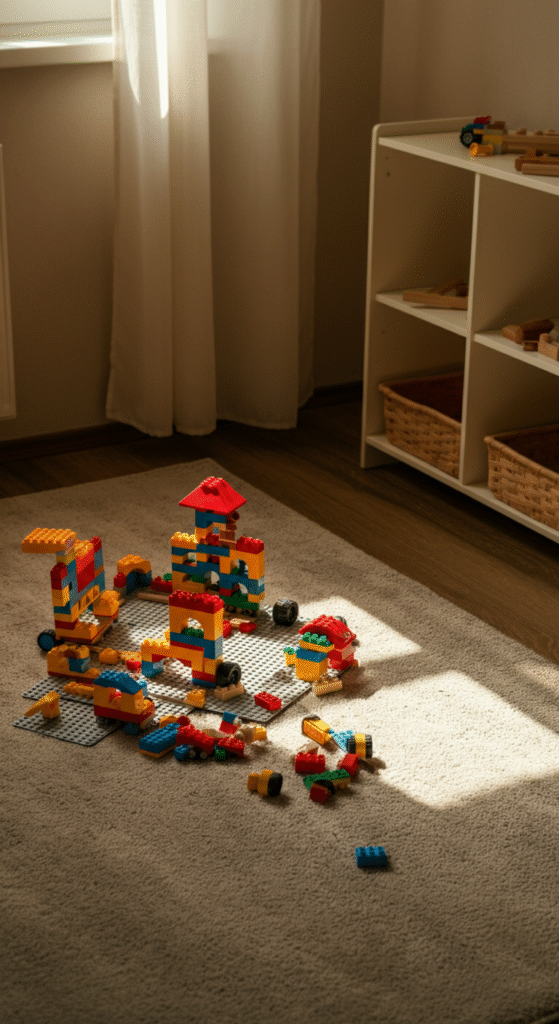
Building blocks, such as LEGO or wooden blocks, are fantastic for developing spatial awareness and problem-solving skills. Create a designated area with a low table or rug where your child can build structures, cities, or even their own little world.
Fun Fact: Did you know that playing with building blocks has been linked to improved cognitive development in children? The hands-on activity stimulates their creativity and enhances their logical thinking.
By setting up a building block station in the living room, you’ll give them endless hours of constructive play while also keeping everything organized in one spot.
3. Interactive Reading Nook: Foster a Love for Books
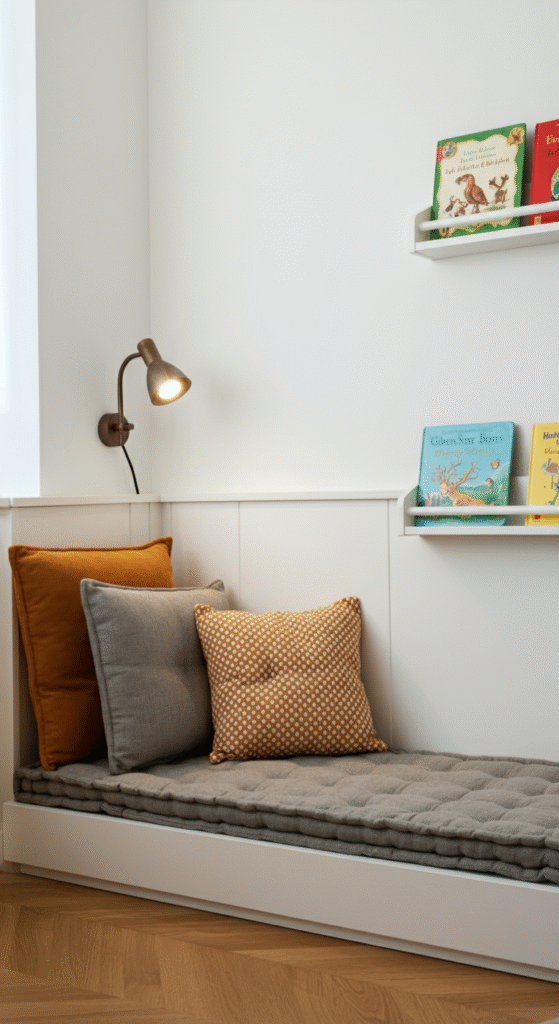
A reading nook can transform your living room into a peaceful escape for your little ones. Create a cozy corner with soft cushions, a small bookshelf filled with their favorite books, and perhaps a mini lamp for reading at night.
Myth: “Only older children enjoy reading.” The truth is, young children can develop a love for books early on when introduced to interactive stories and colorful picture books.
This space can become a sanctuary for kids to unwind, explore new stories, and use their imagination while learning new things. Add some fun throw pillows and perhaps a few blankets to make it extra cozy.
4. Music Corner: Create the Next Rockstar
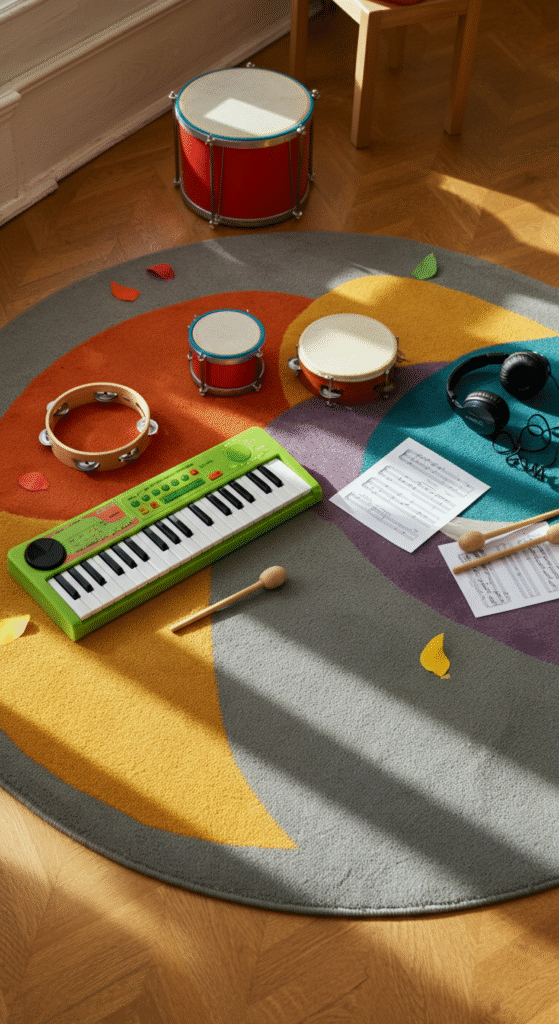
Introduce your child to the world of music by setting up a music station in the living room. A simple keyboard, a few tambourines, or even a small drum set can provide hours of fun and creativity. Music is an amazing tool for emotional expression and can also improve concentration and coordination.
Did you know? Listening to and playing music has been shown to improve language skills and mathematical abilities.
You don’t need to invest in expensive instruments; even basic ones can allow your child to explore rhythm, melody, and sound.
5. DIY Science Lab: Experiment with Fun
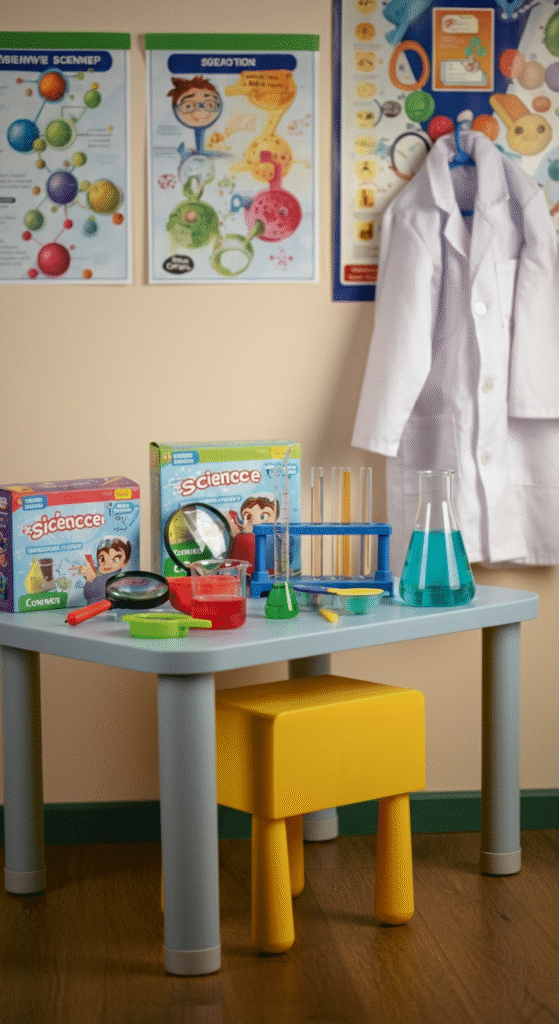
Transform a small section of your living room into a DIY science lab where your child can explore the wonders of science through simple experiments. Set up a table with safe science kits, magnifying glasses, beakers, and measuring spoons. Introduce them to concepts like gravity, chemical reactions, and the world of nature.
Fun Fact: Did you know that hands-on science experiments help children develop critical thinking and scientific reasoning skills? Even basic experiments can make complex topics fun!
Children love discovering how things work, and this interactive setup will keep them engaged while learning about the world around them.
6. Puzzle & Game Corner: Train Their Brain
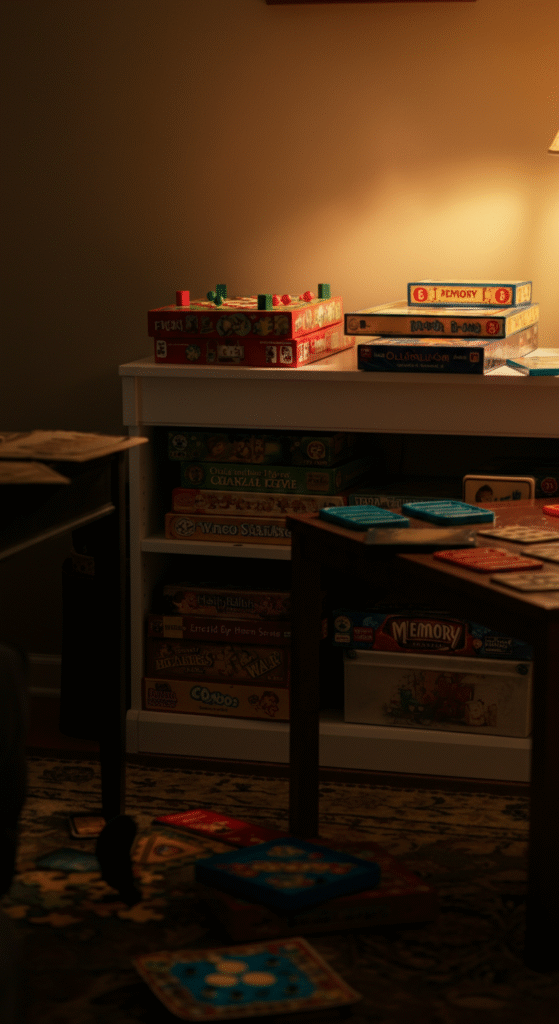
Having a puzzle and game corner in the living room is another great way to develop problem-solving abilities and boost cognitive skills. Organize a small shelf with board games, jigsaw puzzles, and memory games that encourage logical thinking and patience.
Interesting Fact: Playing board games has been proven to improve social skills, teamwork, and communication. It’s not just about fun—it’s about learning too!
With a well-organized game corner, kids can pick their game of choice whenever they’re in the mood for a little challenge.
7. Sensory Play Zone: Engage Their Senses
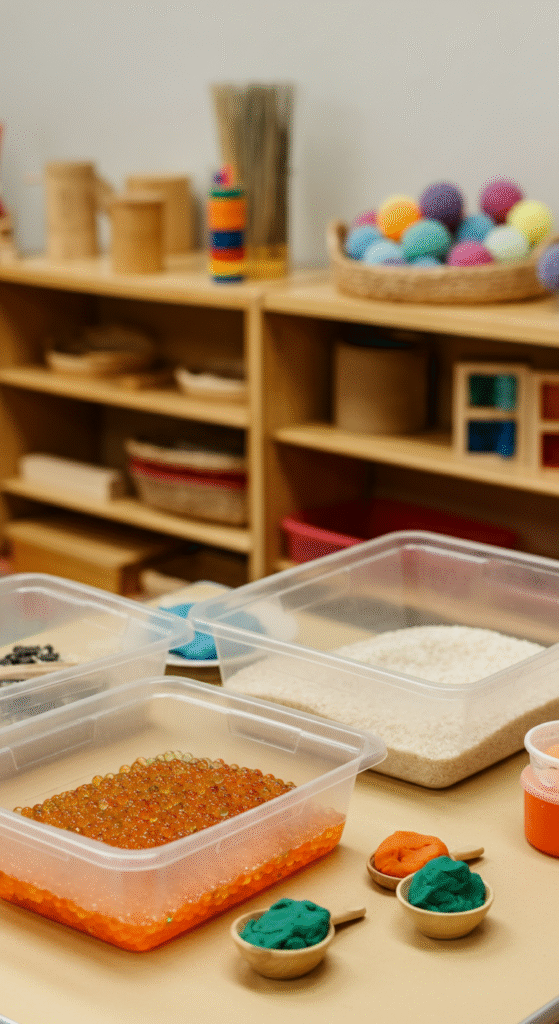
Setting up a sensory play area for your child can be incredibly beneficial for their development. Use materials like sand, water, rice, or playdough that allow them to explore textures and refine their tactile skills. Sensory play helps in improving their motor skills, coordination, and focus.
Did you know? Sensory activities stimulate brain development by strengthening neural connections in the brain and promoting problem-solving abilities.
A designated sensory play corner will offer endless exploration and creative learning opportunities.
8. Nature Corner: Bring the Outdoors In
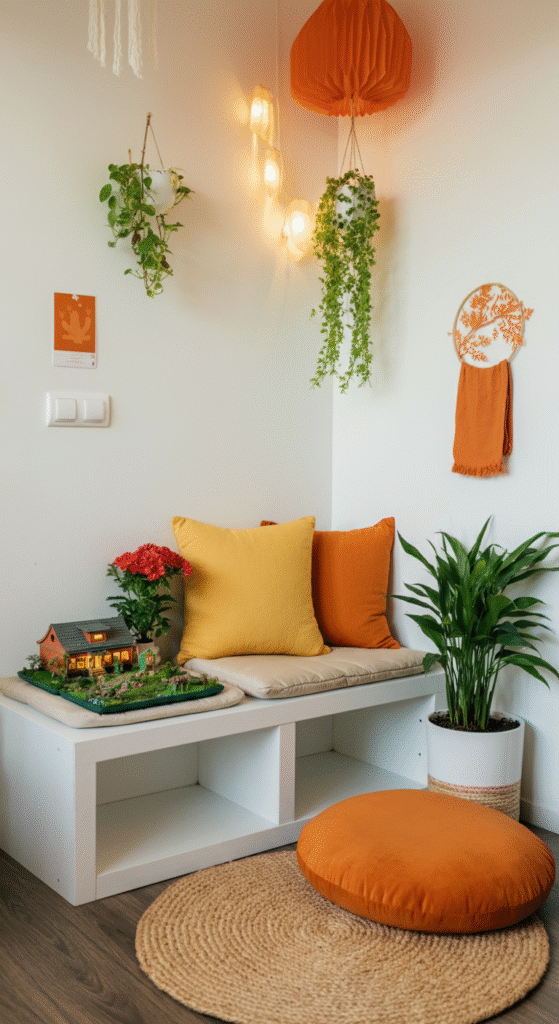
If you have the space, consider creating a nature corner where your child can engage with plants, leaves, and flowers. This can be an educational area where they learn about plant care, the environment, and the importance of nature. You can even include a small indoor garden to cultivate together.
Myth: “Kids are too young to care for plants.” The truth is, even toddlers can learn the basics of plant care, and it’s a wonderful way to teach responsibility and the circle of life.
This corner brings a touch of the outdoors inside, fostering a love for nature and environmental consciousness in your little ones.
9. Imaginative Dress-Up Corner: Encourage Role Play
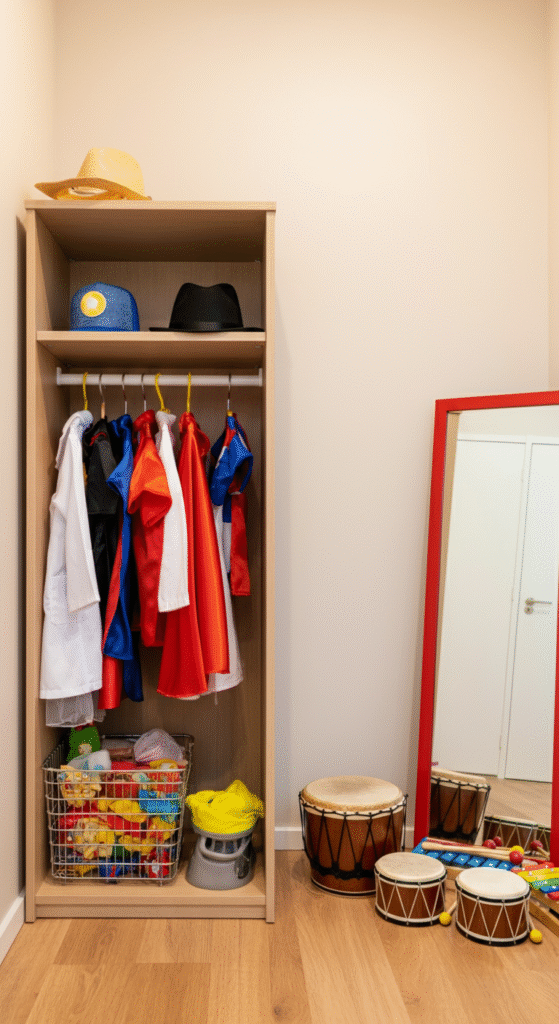
Kids love to immerse themselves in imaginative play, and what better way to support that than a dress-up corner? Fill a small storage unit with costumes and accessories that allow them to dress as superheroes, doctors, or their favorite characters.
Fun Fact: Role-playing is one of the best ways for children to build social skills and empathy as they act out different scenarios and situations.
This area in the living room gives them a chance to step into another world, building both confidence and creativity in the process.
10. DIY Craft Station: Get Hands-On with Art
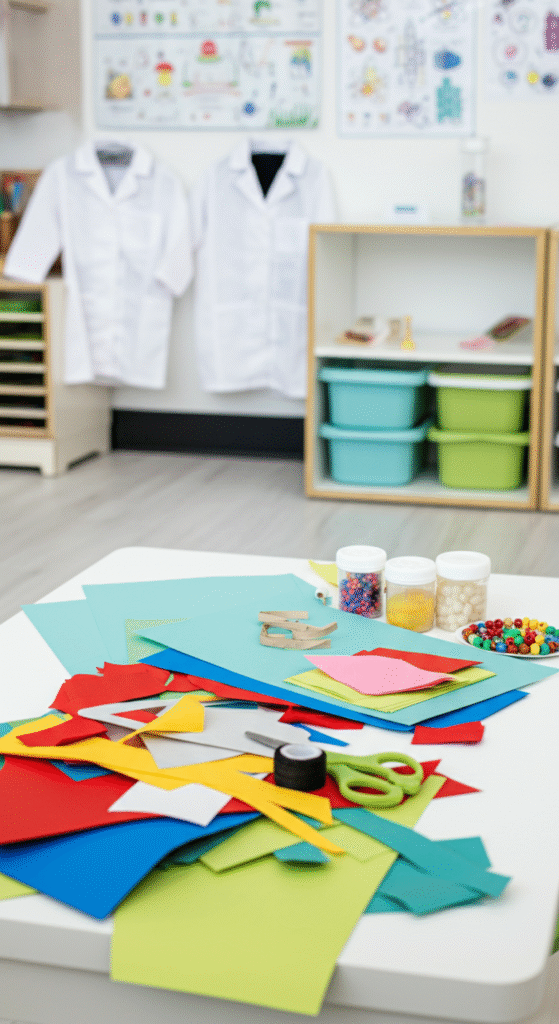
Set up a DIY craft station that allows kids to explore their artistic side through various craft projects. Provide materials like paper, fabric, buttons, and glue sticks, and encourage them to create their own masterpieces.
Did you know? Crafting is a fantastic way to improve fine motor skills while boosting creativity and imagination. It’s a fun way for children to express themselves while creating something meaningful.
With a simple storage system for supplies, a DIY craft station is easy to maintain and allows kids to explore their artistic talents freely.
11. Interactive Storytelling Space: Bring Books to Life
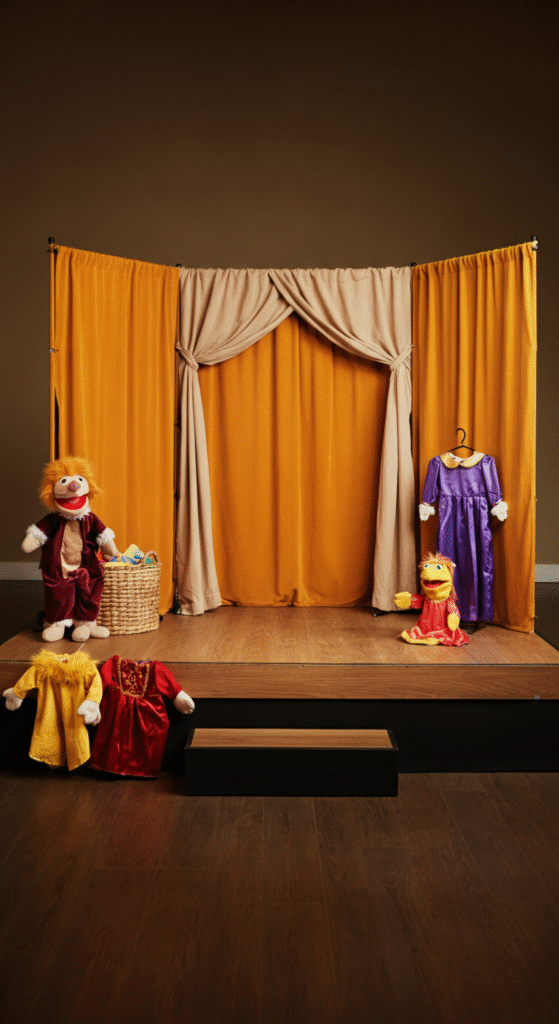
Enhance your living room’s creativity factor by incorporating an interactive storytelling space. Use a backdrop or make a little stage where children can perform stories or act out scenes from their favorite books.
Interesting Fact: Storytelling enhances a child’s communication skills, comprehension, and creative thinking. It also helps them understand different perspectives and emotions.
By combining storytelling with props or costumes, your children will become more engaged in the stories they love.
12. Sports Area: Active Play for Energy
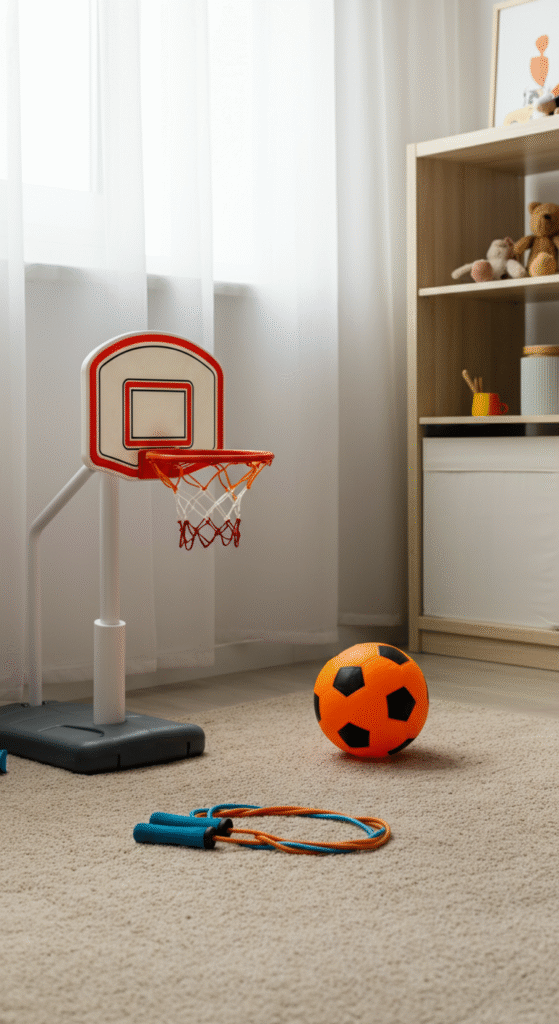
A small corner or even a section of the living room can be turned into a space for active play. Invest in a mini basketball hoop, a soft soccer ball, or a jump rope to let your kids burn off some energy and develop coordination and strength.
Myth: “Active play is best outdoors.” The truth is, you can set up a small indoor sports space that provides kids with plenty of opportunities to get moving—even in a small area.
With just a little creativity, you can design a space for physical activity that promotes health and wellness while keeping the fun indoors.
13. Writing Desk: For Budding Writers
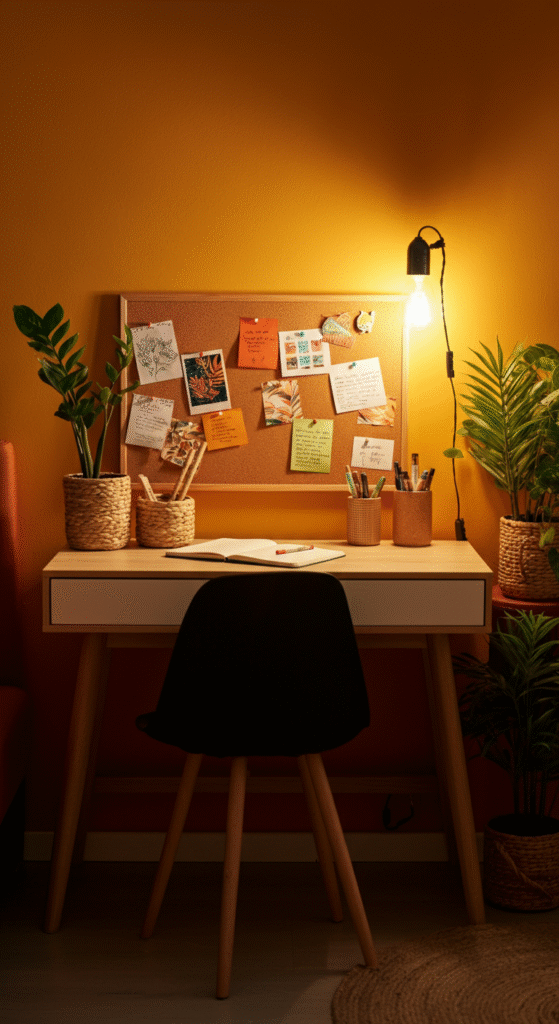
Set up a small writing desk with a notebook, pens, and some inspiration for your little writer. This space encourages them to write short stories, journal their thoughts, or even start a mini novel.
Did you know? Writing encourages creativity, improves language skills, and strengthens cognitive abilities. It’s a great way to boost their imagination and communication skills.
With a personalized writing station, your child will develop a love for writing that can last a lifetime.
14. Photography & Video Station: Capture the World
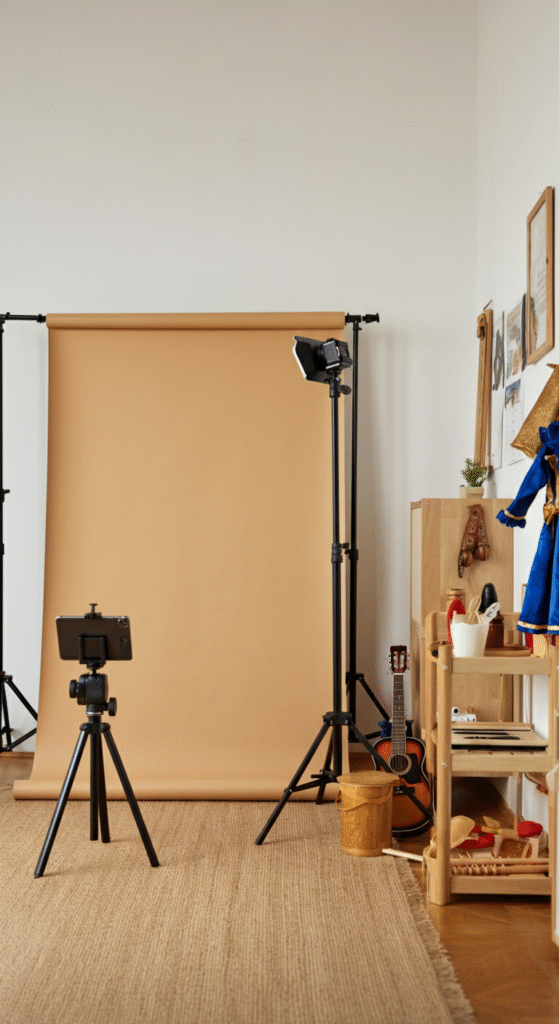
Let your kids create their own mini photography or video station with a camera or tablet. Set up a space where they can capture images, record videos, or even make stop-motion films.
Interesting Fact: Photography helps kids develop their creativity, attention to detail, and storytelling abilities. It’s a fantastic way for them to see the world through a new lens.
This space allows them to express themselves visually and discover the art of storytelling in an exciting and hands-on way.
15. Puzzle Wall: A Challenge for Little Minds
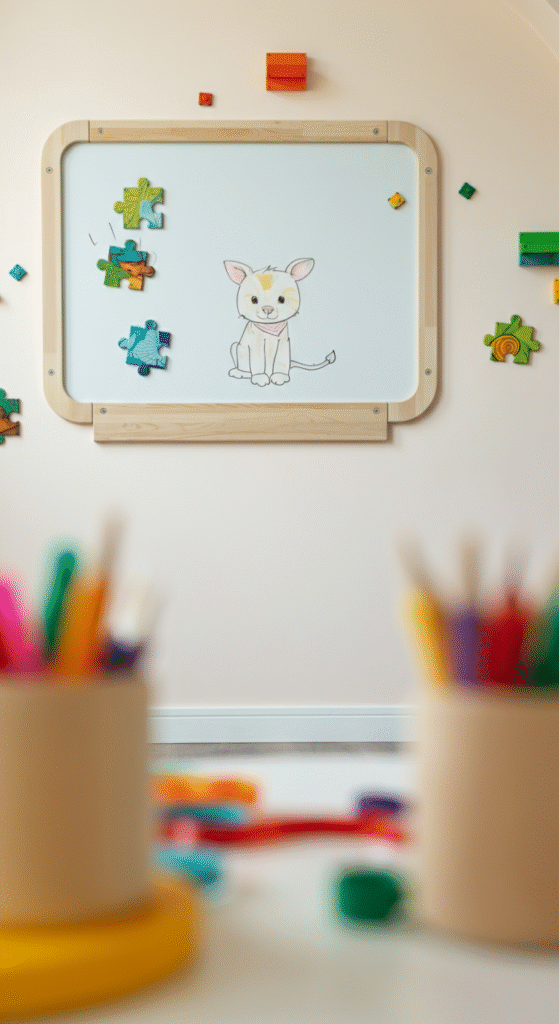
Install a magnetic puzzle board or interactive wall in the living room where your child can work on puzzles, games, or even write with washable markers. A puzzle wall is a fun and educational way to challenge their cognitive abilities while keeping them engaged.
Did you know? Working on puzzles helps improve problem-solving and concentration skills. Plus, it’s a great way to practice patience and perseverance.
This setup will keep your child engaged for hours, fostering a love for learning and improving their brainpower.
Conclusion:
Transforming your living room into a creative and educational space doesn’t require a lot of time or money. With just a few adjustments, you can create a dynamic area that inspires your kids to explore, learn, and grow.
From artistic pursuits to physical activities, each of these 15 activity areas provides endless opportunities for creativity and learning.
Not only will your living room become a place of fun and adventure, but it will also be a space where your child’s imagination and skills are nurtured. So, what are you waiting for? Start creating a playful, creative environment that your kids will love!
Frequently Asked Questions (FAQs)
How can I create a safe and kid-friendly activity space in my living room?
Creating a safe and kid-friendly activity space begins with using non-toxic materials and keeping sharp objects, breakables, or hazardous items out of reach. For active areas, ensure soft, padded surfaces like foam mats or rugs. Regularly check the space for any hazards, and set clear boundaries for safety while encouraging creativity.
Can I incorporate multiple activity areas in one space without it feeling cluttered?
Yes! The key to creating a multi-functional space is organization. Use storage units with clear labels, such as bins or shelves, to keep art supplies, games, and building blocks neatly stored away. Incorporate flexible furniture like foldable tables and chairs that can be tucked away when not in use to maintain a tidy space.
How do I encourage my child to engage with the activity areas?
Start by showing your child how to use each area, whether it’s building with blocks or creating art. Offer praise and positive reinforcement when they engage in these activities, and make the process fun! You can also rotate activities every week to keep things fresh and exciting.
Do I need to invest in expensive equipment for a creative space?
Not necessarily. While some activity areas like music or building blocks may require some initial investment, you can create a creative environment using affordable materials. Art supplies, puzzles, and DIY science kits are all cost-effective and provide endless opportunities for learning and creativity.
How can I make sure my child develops different skills through these activities?
Each activity area is designed to foster specific skills. For instance, building blocks and puzzles improve problem-solving and cognitive skills, while the art station enhances creativity and fine motor skills. Encourage your child to explore a variety of activities, allowing them to develop different skills and interests through hands-on learning.

